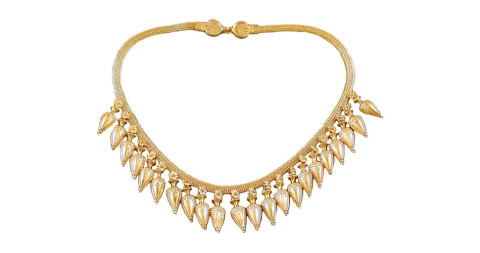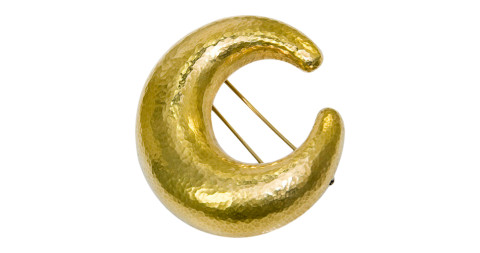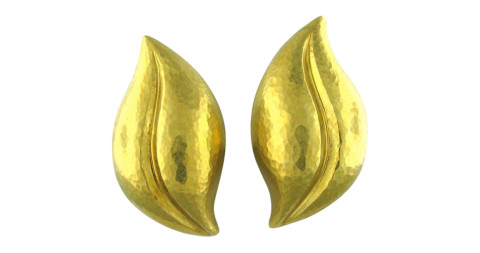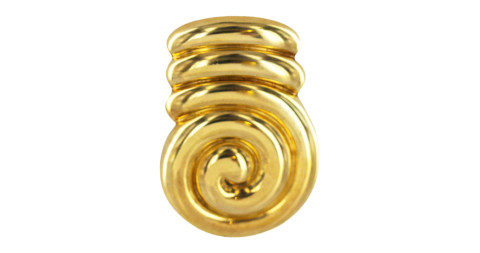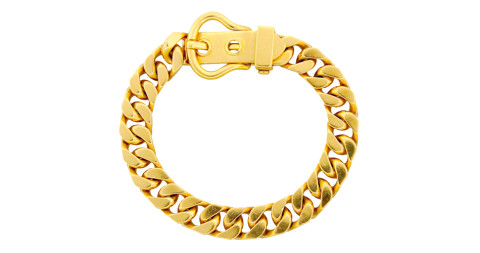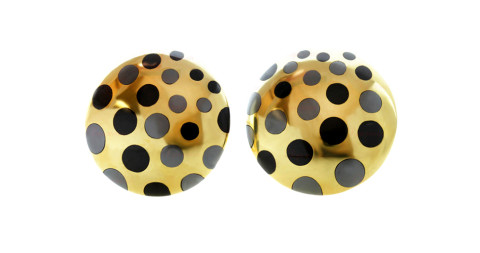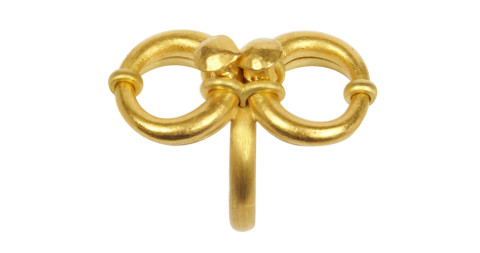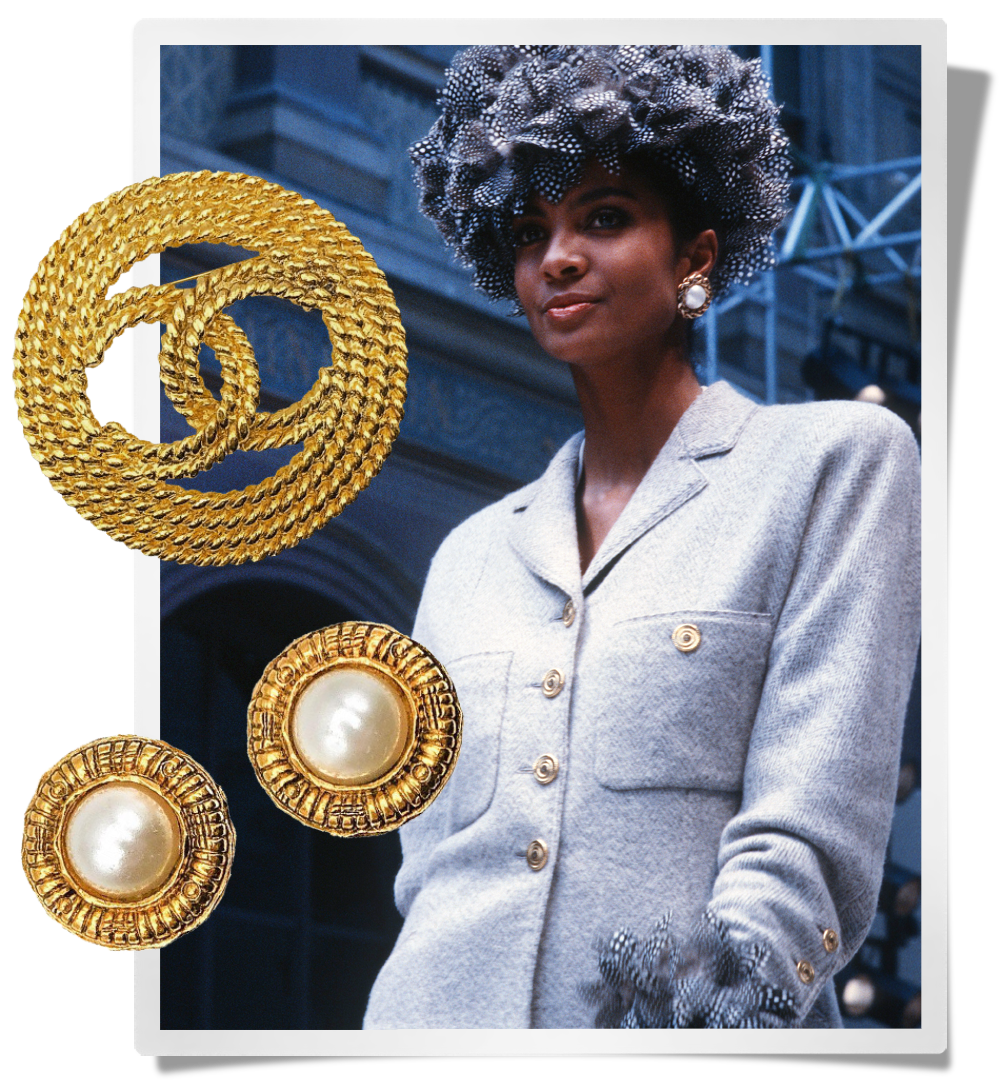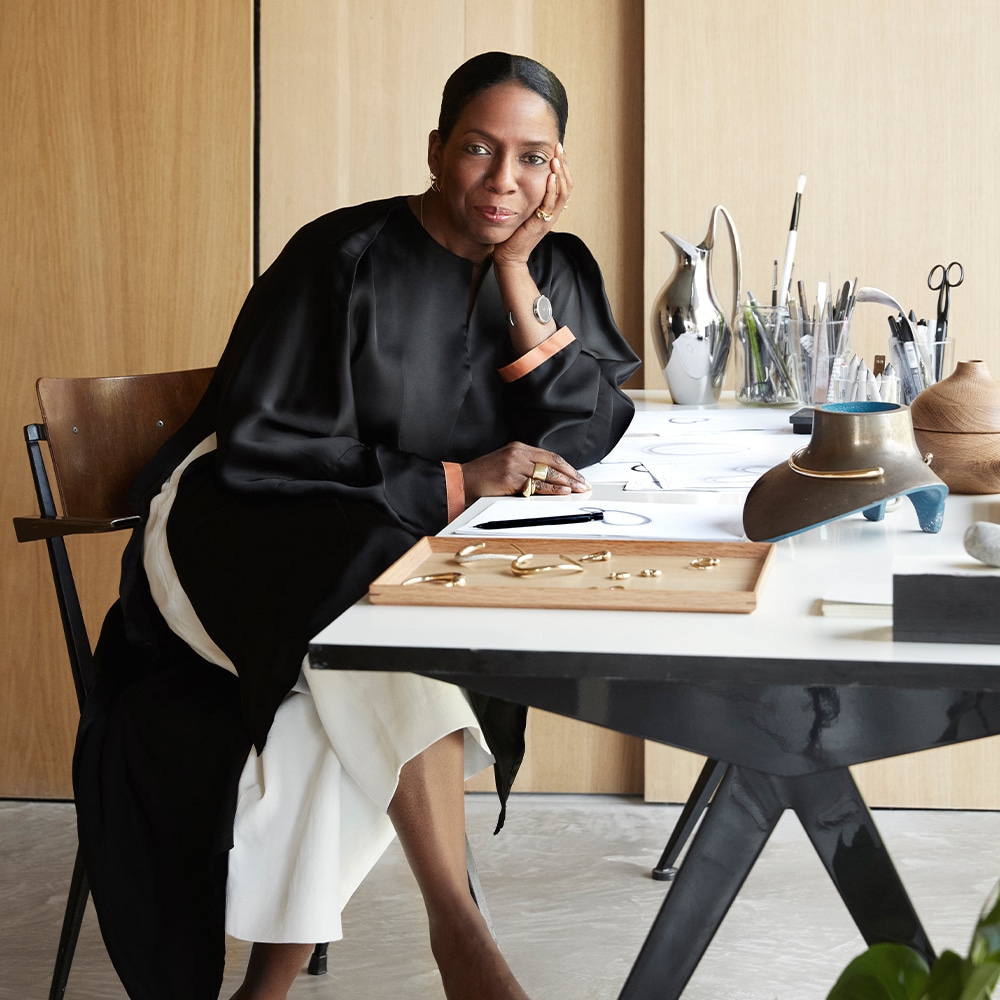
September 18, 2013Christian Dior Leopard Citrine & Enamel Yellow Gold Ring, 2000s, offered by Fortrove
Jewelry is having a golden moment. Maybe it’s the confident, updated 1970s vibe that has permeated so much of today’s style culture. Maybe it’s the return to effortless elegance that many fashion designers seem to be moving toward. Or maybe, even, it’s about a longing in these uncertain times for security and the comforting familiarity of tried-and-true classics. Whatever the reason, gold — eons-old and ageless, soft and sun-burnished — has become the material of the moment.
Fashion has certainly fallen for gold in a big way, drawing on the noble metal’s inherent heroism to underline today’s strong, structured, tailored mood. And contemporary jewelry designers such as Solange Azagury-Partridge and Victoire de Castellane, of Dior Fine Jewelry, have been busy transforming gold from a supporting act into the main event, creating glistering all-day, everyday baubles to adorn strong and glamorous urban warriors.
They’ve rediscovered the glories of gold, just as so many innovative designer-jewelers have done before them, from Castellani of Rome, who, in the 19th century, reinterpreted ancient masterpieces; to Fulco, Duke of Verdura, who reintroduced sun-yellow gold in the years following the cool, whiteness of Art Deco; to Elizabeth Gage, who revelled in the vitality of gold in the 1980s. These are just some of the period pieces that are now eagerly collected today.

From left: Elizabeth Gage Gold-and- Diamond Templar Ring, 2000, offered by Frank Giganti; Yves Saint Laurent Paris Gold Cuff, 1980s, offered by Gallery 47
You might think that the price of gold, madly escalated in recent years, would be a deterrent, but it’s just the opposite. It is this very preciousness, this intrinsic worth, that highlights its unique place in the story of civilization: Gold has always signified currency, power, security, spirituality, a connection to the divine. The ancient Egyptians were buried with their gold to smooth their path into the next world, and Etruscan youths wore a ritualistic gold pendant, known as a “bulla,” to ward off evil spirits.
Perhaps unconsciously, we all tap into the rich heritage of gold, its myths and meanings, its sense of continuity. We have a deep emotional engagement with it, and often a physical, almost visceral response to its color, warmth, seductive tactility and reassuring weight. Gold molds and warms to the skin, acquiring a personal patina; it improves with age, weaving its own story like a gilded thread that connects its maker and wearer. Antique and vintage gold jewels in particular possess the kind of charm, character and “soul” that today’s jewelry lovers are looking for.
Today’s women of style are picking up on the tricks of such mid-century fashion icons as Babe Paley and Slim Keith, who loved to jangle armfuls of gold bracelets. They knew just how to choose the right style of jewel to express their individuality. In the same vein, generations of goldsmiths and jewelers, from ancient to modern, have found new creative expression for gold: the Etruscans perfected the mesmerizing art of granulation, sprinkling a gold surface with the finest grains of gold, like a glimmering frost; high-society jewelers of the last century, like Fulco di Verdura, Jean Schlumberger and Suzanne Belperron, nurtured a renewed taste for luscious sun-yellow gold and understood that women wanted strong yet feminine and expressive jewels. For her part, Paloma Picasso believes that the hammered gold pieces she has designed for Tiffany & Co. since 1980 are only truly finished when they’re worn, taking on the soft sheen of a timeless talisman.

Etruscan Revival Ram’s Head Brooch/Pendant, ca. 1865, offered by James Robinson
A classic gold chain remains an enduring wardrobe staple; today’s wearers modernize the look by playing with volume, proportion and convention, adopting oversize pieces that resemble tough, no-nonsense hardware. No one does industrial-strength chic better than Hermès, exemplified by their chunky curb-link chain-buckle bracelets from the 1980s and their Chaine d’Ancre, the anchor link; try it in rose gold this season. You could team it with a pair of earrings, oversized studs or buttons or with small, chunky hoops.
On the subject of classics, 19th-century archaeological-revival pieces, among the most desirable and collectible of antique jewelry, possess a particular appeal and a cerebral beauty that comes from the richness of their burnished gold surfaces and their homage to ancient masterpieces. Great 19th-century goldsmiths, Castellani of Rome included, dedicated themselves to replicating the ancient gold artifacts unearthed at archaeological sites, and the new jewels became all the rage, to the point of obsession. In general, late-19th-century gold jewelry — bold, confident and forthright, reflecting the prosperity of the High Victorians — has been often overlooked in recent years, but it seems perfectly on trend now.

Cartier Gold-and-Diamond Oval Link Chain and Matching Earrings, 1960s, offered by Yafa
Ideally, a perfectly pitched vintage gold piece should become a personal attribute and a conversation piece. A single, stand-out gold ring, especially worn on the index finger, could well replace the ubiquitous gem-set cocktail ring. But of all jewels, a brooch is the most likely to spark interest and tell a story. It’s likely to become the jewel du jour this fall, with pant suits, tailored jackets and buttoned up collars crying out for ornamentation to challenge their inherent masculinity. The brooch is so much more versatile than people generally think. It can be worn on a jacket lapel, at the throat or, more unexpectedly, on a belt or at the shoulder. Brooches offer the greatest scope for artistic expression, with fewer limitations of form and function than other jewels, so choice and variety are at their most vast. There are the figurative pieces of the 1950s and ’60s, both decades of fervent brooch-wearing. Or the abstract modernism of the 1970s, which provides rich pickings, especially when it comes to fashion’s current taut, tailored and linear look. If this is all a bit too strong or abstract, brooches also offer a world of whimsy: animals, flowers, insects and more. Make these pieces look modern by wearing several at once, in clusters.
Finally, returning to today’s move toward casual opulence, we’re following the mood of the 1960s and ’70s, when gold was the key ingredient of the new jet-set jewels that broke with the formality of the ’50s. Designs absorbed hippie freedom, exotic richness and exuberant color. The quintessential jewel of that time was the heavy sautoir, with large lustrous links — circles, rectangles or huge ovals — of textured gold. It epitomizes centuries of bold femininity and a pulsating glowing glamour that would look just right today.

